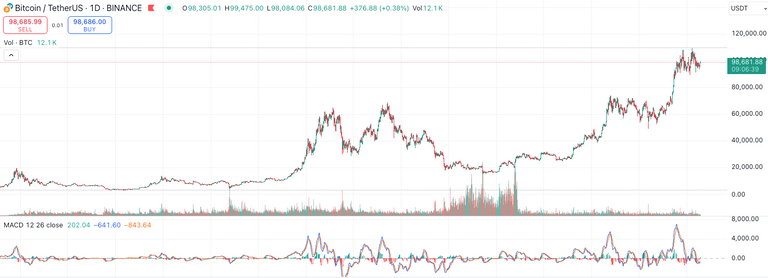
Let's chat about MACD, that trusty tool in many of our arsenals. You know, the one with those fancy lines that cross and make us feel like we've cracked the market code? Yeah, that one. But here's the thing - there's way more to MACD than just waiting for lines to cross.
What's MACD?
MACD, or Moving Average Convergence Divergence if you're feeling fancy, is like a Swiss Army knife for trend and momentum. It's not perfect (what indicator is?), but it's got some serious tricks up its sleeve.
The real power of MACD? It helps us stay objective. In a world where FOMO and market fear can mess with our heads, MACD gives us cold, hard data to work with. No emotions, just trends and momentum wrapped up in one neat package.
Beyond the Crossover
Sure, watching the MACD line cross the signal line is cool. But if that's all you're doing, you're missing out. Here's where MACD really shines:
Divergence Analysis
This is where things get spicy. When price is doing one thing, but MACD is telling a different story, pay attention. It might be signaling a potential reversal.
For example:
- Price hits a new high, but MACD's showing lower highs? That bearish divergence might be telling you to tighten those stop losses.
- Price dips to a new low, but MACD's making higher lows? Could be time to start looking for long entries.
Just remember, divergence isn't a guarantee. It's a heads-up, not a crystal ball.
Multiple Timeframe Analysis
Here's a pro tip: don't get stuck on one timeframe. Combine MACD signals from different timeframes to get a more complete picture.
I like to start with a daily chart for the big picture, then zoom into a 4-hour or 1-hour chart for entry timing. It's like having a map and a magnifying glass - you see the destination and the best route to get there.
Putting It All Together
So, how do we use all this MACD goodness? Here's my approach:
- Spot the Trend: Use MACD on a higher timeframe to get the overall direction.
- Look for Divergence: This can signal potential reversals or the end of a trend.
- Fine-tune Entries/Exits: Zoom into lower timeframes to time your moves.
- Stay Flexible: If you're in a long-term trade but MACD shows short-term weakness, consider hedging or taking partial profits.
Remember, MACD is a tool, not a magic wand. Use it alongside other indicators and always, always manage your risk.
Wrapping Up
MACD's been around for ages, and for good reason. It's versatile, relatively easy to understand, and can provide some solid insights when used right. But like any tool, it's all about how you use it.